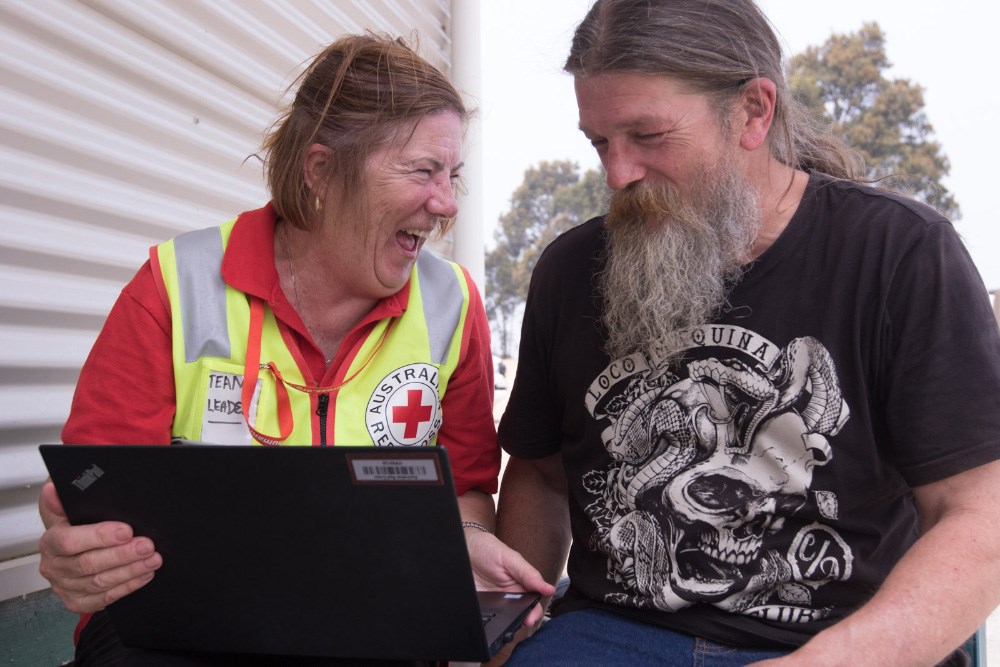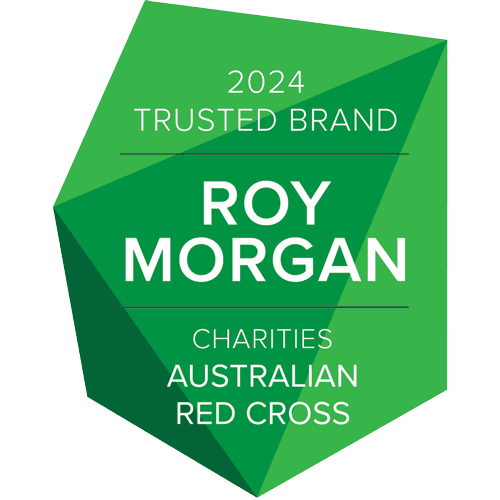Providing financial assistance after the bushfires
January–December 2020

As donations poured in, we rapidly expanded the financial assistance provided to bushfire survivors. Our aim was to help people when they were ready, with the most vulnerable receiving up to $70,000 in grants.
Grant type
Grant amount
Grants paid
Bereavement grant
For senior next-of-kin of those who died in the fires
Up to $50,000
35 grants ($1.3m)
Emergency grant
To support people whose primary place of residence was destroyed
$20,000
2,922 grants ($58m)
Re-establishment grant
To help people who lost their primary place of residence to re-establish a safe place to live
$40,000 (owner occupiers)
$10,000 (renters/mobile homes)
2,448 grants ($76.3m)
Primary residence repair grant
For home owner occupiers whose primary residence was structurally damaged
$10,000
2,356 grants ($22.6m)
Injury grant
For people hospitalised for injuries as a direct result of the bushfires
$7,500 or $15,000
642 grants ($8.3m)
Additional support grant
For previous grant recipients who are on low incomes and still in financial hardship
Up to $10,000
1,924 grants ($17.8m)
Discretionary financial hardship grant
For people experiencing extreme financial hardship who were not eligible for other Red Cross grants and unable to access support elsewhere
Up to $20,000
221 grants ($2.7m)
How we paid grants
Paying each grant was a balancing act between compassion and diligence.
Charity laws
Australia’s charity laws govern who and how we can help. As a public benevolent institution, Red Cross must provide relief to people who are in hardship or financial distress. This was interpreted to mean we could help people who lost their primary place of residence, but not an investment property or holiday home. It also meant that we could only help people; not businesses or animals or community infrastructure.
Helping those who lost the most
We provided the most financial assistance to people who lost their primary place of residence, and to the next-of-kin of those who died in the fires. We also made significant payments to home owner occupiers who needed to make urgent repairs, and people hospitalised for injuries.
Finding eligible people
There is no ‘master list’ of people whose homes were destroyed or damaged, or who were injured. Records of houses destroyed did not distinguish between primary residences and investment properties, nor did they count caravans or mobile homes that people lived in. Privacy laws and an absence of data sharing arrangements meant that people who had been affected had to register with multiple agencies
People had to come to us for assistance, and we used every means possible to find them: our teams spreading the word on the ground, targeted online, print and radio advertising, postcard drops, community events and through partners like Australia Post and the Commonwealth Bank.
Making it easy to apply
The quickest way to help the largest number of people was to accept online applications. But we knew that many people would not be able to do this easily, so Red Cross volunteers and staff with iPads helped hundreds of people complete their applications.
We asked for only the most fundamental things: proof of identity, proof of residence, record of hospital admission (for the injury grant) and proof of government financial assistance (for the additional support grant). Knowing that many people lost critical documents in the fires, and that others would struggle to supply them online, our grants team talked thousands of applicants through the process.
Preventing fraud
We had to ensure that donor funds went to people in genuine need. We received thousands of applications from bots, as well as carefully falsified documents. We also had many applications where the address provided did not match records of fire damage. Suspected fraudulent applications were thoroughly investigated, including visual inspections where necessary, to ensure only genuine applicants received grants. Our approach was acknowledged by the charity regulator (ACNC) in its review.
Impact of COVID-19
The pandemic and the nationwide lockdowns that occurred between March and June greatly impacted our ability to search for eligible applicants. People were less able to travel to town centres or visit relatives to access the internet and apply online. COVID-19 restrictions also delayed rebuilding, leaving many bushfire survivors feeling forgotten in the wake of the global crisis.
Helping people when they were ready
We knew from previous disasters that it would take months for some people to come forward for help. More than 1,460 people applied for the first time between April and June, and a further 1,739 people applied between July and December. As more people came forward, we extended the application dates for our grants.
People took time to come forward for many reasons. Some were living off the grid in remote locations, some were initially reluctant to ask for ‘charity’, some thought the money should go to those ‘more deserving’, and many simply needed time before they could begin the process of navigating bushfire assistance.
Allocating funds
We allocated funds to various grants as they came in, including $13m in pledged donations that arrived after June. We changed allocations depending on the funds we had and the needs we were seeing, which were often higher than official records indicated.
We increased the amount available under most grants; each time contacting previous eligible applicants and directly transferring additional funds to them if they were still in hardship.
Other cases of financial hardship
A few people who did not meet the criteria for our grants either approached us for help or were referred to us by other agencies. Our grants team worked with each of these applicants and, where genuine financial hardship existed because of the bushfires, we were able to provide them a relief payment. A total of $2.7m has been used for these financial hardship payments.
Charity donations of $2 or more to Australian Red Cross may be tax deductible in Australia. Site protected by Google Invisible reCAPTCHA. © Australian Red Cross 2025. ABN 50 169 561 394
